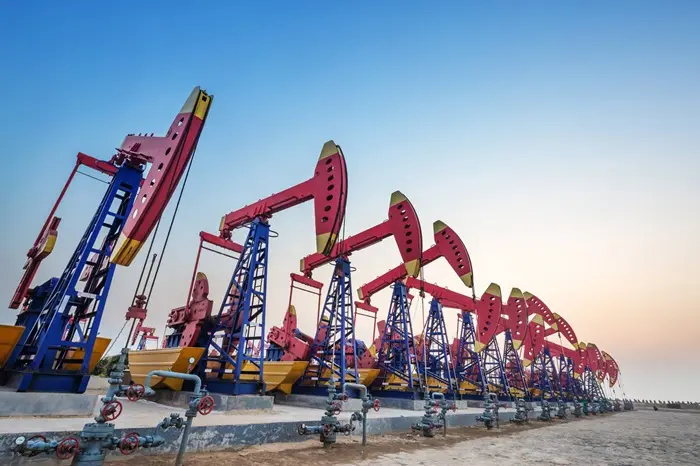Crude oil is one of the most important and widely used natural resources in the world. It serves as a fundamental raw material for a variety of products, with gasoline being one of its most prominent derivatives. In this article, we will explore the percentage of crude oil that is refined into gasoline, the refining process, and how gasoline production impacts the global economy. By the end, you’ll have a clear understanding of the relationship between crude oil and gasoline, as well as the role gasoline plays in the energy sector.
Understanding Crude Oil and Its Uses
What Is Crude Oil?
Crude oil is a naturally occurring liquid found in geological formations beneath the Earth’s surface. It is composed of hydrocarbons—molecules made up of hydrogen and carbon—along with various other organic compounds. This versatile substance can be refined into numerous products, ranging from gasoline to diesel, jet fuel, and even non-energy products like plastics and chemicals.
Refining Crude Oil
Crude oil is not directly used in its raw form. It must undergo a refining process to separate the various hydrocarbons and other compounds that can be converted into useful products. The refining process involves several steps, including distillation, cracking, and blending, to create a wide variety of fuels and chemicals.
Key Products of Crude Oil Refining
Crude oil can be refined into several key products:
- Gasoline: Used primarily in vehicles and transportation.
- Diesel Fuel: Used in trucks, buses, and other heavy-duty vehicles.
- Jet Fuel: Used in aircraft.
- Heating Oil: Used in residential and industrial heating systems.
- Liquefied Petroleum Gas (LPG): Used for heating, cooking, and fuel for certain vehicles.
- Asphalt: Used for road construction.
- Petrochemicals: Used in the production of plastics, fertilizers, and chemicals.
The refining process ensures that these products are separated, depending on their boiling points, and are then further processed to meet specific requirements.
Gasoline Production from Crude Oil
Gasoline: The Leading Product from Crude Oil
Among the many products derived from crude oil, gasoline holds a prominent position. It is the most widely used fuel in the transportation sector, particularly for cars, motorcycles, and light-duty vehicles. Gasoline accounts for a significant portion of the crude oil refined globally, but the exact percentage varies depending on several factors, such as the type of crude oil and the regional demand for different products.
Percentage of Crude Oil Used for Gasoline
On average, approximately 44% of crude oil is refined into gasoline. However, this figure can fluctuate slightly depending on the refinery’s configuration and regional market needs. Refineries in regions with a high demand for gasoline may produce a higher percentage of gasoline from crude oil, while those in areas with more demand for diesel or other products may produce less gasoline.
Factors Affecting Gasoline Production
Several factors influence the amount of gasoline produced from crude oil:
Crude Oil Type: Different types of crude oil yield different amounts of gasoline. Light crude oil typically produces more gasoline, while heavy crude oil may result in more diesel and other products.
Refinery Configuration: The design of a refinery determines how much gasoline can be produced. Refineries with more complex refining capabilities can produce higher yields of gasoline and other products.
Market Demand: In countries with higher gasoline consumption, refineries may adjust their output to meet local demand. Conversely, regions with a larger demand for diesel or jet fuel may prioritize the production of those products.
Gasoline vs. Other Products from Crude Oil
While gasoline is one of the largest products derived from crude oil, it is far from the only one. Other fuels, such as diesel and jet fuel, also make up a substantial percentage of refined products. The percentage of crude oil used for gasoline can vary depending on the total refinery output and market demands for these other fuels.
The breakdown of a typical crude oil refinery’s output may look like this:
- Gasoline: 44% (on average)
- Diesel: 23%
- Jet Fuel: 10%
- Other Products (e.g., heating oil, petrochemicals): 23%
This distribution can vary significantly depending on the refinery’s focus and the specific crude oil being processed.
Gasoline Consumption and Global Trends
Global Gasoline Demand
Gasoline is the most commonly used fuel for transportation worldwide. It is particularly dominant in countries like the United States, where personal vehicle use is widespread. As of recent years, gasoline consumption has been on the rise in emerging economies, contributing to the increased demand for crude oil.
In the United States, gasoline consumption accounts for a significant portion of total crude oil demand. According to data from the U.S. Energy Information Administration (EIA), approximately 45% of U.S. petroleum consumption is for gasoline. Globally, gasoline demand accounts for about 43% of global crude oil consumption.
Impact of Electric Vehicles on Gasoline Demand
The rise of electric vehicles (EVs) presents a long-term challenge to gasoline demand. As EV adoption increases, the amount of gasoline consumed in the transportation sector may decrease. However, it is important to note that the transition to EVs is gradual, and gasoline will remain a critical part of the global energy mix for the foreseeable future.
Refining Shifts in Response to Market Changes
Refiners may adjust their operations based on shifts in market demand. For example, during periods of high gasoline demand (such as summer driving seasons), refineries may prioritize gasoline production. Conversely, during winter months, when heating oil is in higher demand, refineries may shift their production accordingly.
See Also: When Is Crude Oil Expected to Run Out?
Economic and Environmental Implications
Economic Role of Gasoline Production
Gasoline production plays a vital role in the global economy. The refining of crude oil into gasoline creates thousands of jobs worldwide, from oil extraction to refinery operation and transportation. Moreover, gasoline revenue fuels local and national economies, especially in oil-producing countries.
In addition to the direct economic impact, gasoline serves as a critical input for transportation, which is central to global trade and commerce. Without an abundant supply of gasoline, industries ranging from logistics to agriculture would face significant challenges.
Environmental Concerns
While gasoline production is a key economic driver, it is not without environmental concerns. The extraction and refinement of crude oil contribute to greenhouse gas emissions, which play a role in climate change. Additionally, gasoline combustion in vehicles releases carbon dioxide (CO2) and other pollutants, contributing to air quality issues and climate-related risks.
Governments and industries are increasingly focusing on cleaner energy sources and technologies to reduce the environmental impact of gasoline. However, transitioning away from gasoline requires time and investment in alternative fuels, such as electric vehicles (EVs) and hydrogen-based technologies.
The Future of Gasoline in the Energy Mix
The Role of Alternative Fuels
As global energy transitions continue, the demand for gasoline may begin to plateau or even decline in some regions. In the face of climate change and environmental concerns, governments are incentivizing the adoption of electric vehicles (EVs) and renewable energy sources. However, gasoline will still be an essential fuel in many parts of the world for decades.
Continued Investment in Oil and Gas Infrastructure
Despite the shift toward greener energy, gasoline will remain a significant part of the energy mix for the foreseeable future. Refineries will continue to process crude oil into gasoline, especially in regions where the infrastructure for EVs and alternative fuels is not yet developed.
Moreover, as developing nations continue to industrialize and grow their middle class, the demand for gasoline will likely remain strong, especially for personal transportation.
Conclusion
In conclusion, approximately 44% of crude oil is used for gasoline production globally, though this percentage can vary based on several factors, including the type of crude oil, the refinery’s configuration, and market demand. Gasoline is one of the largest products derived from crude oil, playing a critical role in the global economy and transportation sector.
As the world transitions toward cleaner energy sources and technologies, the demand for gasoline may shift, but it will remain an essential fuel for many years. Understanding the complex relationship between crude oil and gasoline production is crucial for both investors and consumers in the energy sector. The ongoing evolution of the energy market will undoubtedly shape the future of gasoline consumption and its role in the global economy.
Related topics:



































